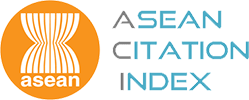Fiscal Policy, Institutions, and Economic Growth in Asian Countries: Evidence from Pedroni’s Cointegration Approach
Keywords:
{}Abstract
This paper investigates the relationship between fiscal policy, institutions, and economic growth and also the role of the institution in Asian economies between 1982 and 2001 through the application of Pedroni’s Cointegration approach. It examined two different channels through which fiscal policy and institutions can affect long-run economic growth in Asian economies. The first channel is when aggregate of government expenditure, aggregate of other fiscal variables, and the institution affect the real per capita Gross Domestic Production (GDP) and the second channel is to determine the role of institutions on the real per capita GDP. The Pedroni Cointegration result established a long-run relationship between fiscal policy, institution, and economic growth. We found a positive and statistically significant impact of aggregate of government expenditure and aggregate of other fiscal variables and institution on real per capita GDP. We also found that there is a role of institutions on the real per capita GDP. JEL Classification: C23, H30, H50, O47
Downloads
Download data is not yet available.
References
Additional Files
Published
01-12-2008
Issue
Section
Articles
How to Cite
Fiscal Policy, Institutions, and Economic Growth in Asian Countries: Evidence from Pedroni’s Cointegration Approach. (2008). Malaysian Management Journal, 12(1&2), 117-135. https://e-journal.uum.edu.my/index.php/mmj/article/view/8956









